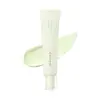What's inside
What's inside
 Key Ingredients
Key Ingredients

 Benefits
Benefits

 Concerns
Concerns

No concerns
 Ingredients Side-by-side
Ingredients Side-by-side

Water
Skin ConditioningEthylhexyl Methoxycinnamate
UV AbsorberHomosalate
Skin ConditioningEthylhexyl Salicylate
UV AbsorberButylene Glycol
HumectantTitanium Dioxide
Cosmetic ColorantOctocrylene
UV AbsorberDiethylamino Hydroxybenzoyl Hexyl Benzoate
UV FilterDibutyl Adipate
EmollientGlycerin
HumectantAlcohol Denat.
AntimicrobialPEG-100 Stearate
Glyceryl Stearate
EmollientBis-Ethylhexyloxyphenol Methoxyphenyl Triazine
Skin ConditioningMethyl Methacrylate Crosspolymer
Glyceryl Stearate Se
EmulsifyingPolyglyceryl-2 Caprate
EmulsifyingCetearyl Alcohol
EmollientPolysorbate 60
EmulsifyingCaprylyl Methicone
Skin Conditioning1,2-Hexanediol
Skin ConditioningAmmonium Acryloyldimethyltaurate/Vp Copolymer
Mica
Cosmetic ColorantSqualane
EmollientOctyldodecanol
EmollientSucrose Stearate
EmollientStearic Acid
CleansingSimmondsia Chinensis Seed Oil
EmollientAlumina
AbrasiveGlyceryl Caprylate
EmollientCaprylyl Glycol
EmollientEthylhexylglycerin
Skin ConditioningXanthan Gum
EmulsifyingPolyacrylate Crosspolymer-6
Emulsion StabilisingPolyacrylate-13
Aluminum Hydroxide
EmollientEchium Plantagineum Seed Oil
Skin ConditioningPolyisobutene
Helianthus Annuus Seed Oil Unsaponifiables
EmollientPolysorbate 20
EmulsifyingSorbitan Isostearate
EmulsifyingCardiospermum Halicacabum Flower/Leaf/Vine Extract
Skin ConditioningAsiaticoside
AntioxidantMadecassic Acid
Skin ConditioningAsiatic Acid
Skin ConditioningTocopherol
AntioxidantZingiber Officinale Root Extract
MaskingMentha Piperita Leaf Extract
Skin ConditioningCamellia Sinensis Leaf Extract
AntimicrobialLeuconostoc/Radish Root Ferment Filtrate
AntimicrobialCI 77891
Cosmetic ColorantChromium Oxide Greens
CI 77492
Cosmetic ColorantParfum
MaskingWater, Ethylhexyl Methoxycinnamate, Homosalate, Ethylhexyl Salicylate, Butylene Glycol, Titanium Dioxide, Octocrylene, Diethylamino Hydroxybenzoyl Hexyl Benzoate, Dibutyl Adipate, Glycerin, Alcohol Denat., PEG-100 Stearate, Glyceryl Stearate, Bis-Ethylhexyloxyphenol Methoxyphenyl Triazine, Methyl Methacrylate Crosspolymer, Glyceryl Stearate Se, Polyglyceryl-2 Caprate, Cetearyl Alcohol, Polysorbate 60, Caprylyl Methicone, 1,2-Hexanediol, Ammonium Acryloyldimethyltaurate/Vp Copolymer, Mica, Squalane, Octyldodecanol, Sucrose Stearate, Stearic Acid, Simmondsia Chinensis Seed Oil, Alumina, Glyceryl Caprylate, Caprylyl Glycol, Ethylhexylglycerin, Xanthan Gum, Polyacrylate Crosspolymer-6, Polyacrylate-13, Aluminum Hydroxide, Echium Plantagineum Seed Oil, Polyisobutene, Helianthus Annuus Seed Oil Unsaponifiables, Polysorbate 20, Sorbitan Isostearate, Cardiospermum Halicacabum Flower/Leaf/Vine Extract, Asiaticoside, Madecassic Acid, Asiatic Acid, Tocopherol, Zingiber Officinale Root Extract, Mentha Piperita Leaf Extract, Camellia Sinensis Leaf Extract, Leuconostoc/Radish Root Ferment Filtrate, CI 77891, Chromium Oxide Greens, CI 77492, Parfum
 Reviews
Reviews

Ingredients Explained
These ingredients are found in both products.
Ingredients higher up in an ingredient list are typically present in a larger amount.
1,2-Hexanediol is a synthetic liquid and another multi-functional powerhouse.
It is a:
- Humectant, drawing moisture into the skin
- Emollient, helping to soften skin
- Solvent, dispersing and stabilizing formulas
- Preservative booster, enhancing the antimicrobial activity of other preservatives
Butylene Glycol (or BG) is used within cosmetic products for a few different reasons:
Overall, Butylene Glycol is a safe and well-rounded ingredient that works well with other ingredients.
Though this ingredient works well with most skin types, some people with sensitive skin may experience a reaction such as allergic rashes, closed comedones, or itchiness.
Learn more about Butylene GlycolEthylhexylglycerin (we can't pronounce this either) is commonly used as a preservative and skin softener. It is derived from glyceryl.
You might see Ethylhexylglycerin often paired with other preservatives such as phenoxyethanol. Ethylhexylglycerin has been found to increase the effectiveness of these other preservatives.
Glycerin is already naturally found in your skin. It helps moisturize and protect your skin.
A study from 2016 found glycerin to be more effective as a humectant than AHAs and hyaluronic acid.
As a humectant, it helps the skin stay hydrated by pulling moisture to your skin. The low molecular weight of glycerin allows it to pull moisture into the deeper layers of your skin.
Hydrated skin improves your skin barrier; Your skin barrier helps protect against irritants and bacteria.
Glycerin has also been found to have antimicrobial and antiviral properties. Due to these properties, glycerin is often used in wound and burn treatments.
In cosmetics, glycerin is usually derived from plants such as soybean or palm. However, it can also be sourced from animals, such as tallow or animal fat.
This ingredient is organic, colorless, odorless, and non-toxic.
Glycerin is the name for this ingredient in American English. British English uses Glycerol/Glycerine.
Learn more about Glycerin